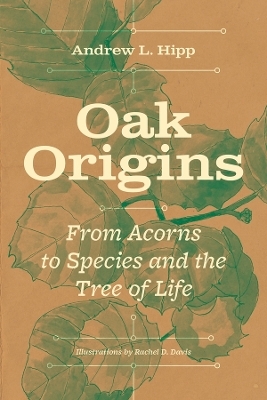
Oak Origins
University of Chicago Press (Verlag)
978-0-226-82357-7 (ISBN)
- Noch nicht erschienen (ca. Dezember 2024)
- Versandkostenfrei innerhalb Deutschlands
- Auch auf Rechnung
- Verfügbarkeit in der Filiale vor Ort prüfen
- Artikel merken
An oak begins its life with the precarious journey of a pollen grain, then an acorn, then a seedling. A mature tree may shed millions of acorns, but only a handful will grow. One oak may then live 100 years, 250 years, or even 13,000 years. But the long life of an individual is only a part of these trees’ story.
With naturalist and leading researcher Andrew L. Hipp as our guide, Oak Origins takes us through a sweeping evolutionary history, stretching back to a population of trees that lived more than 50 million years ago. We travel to the ancient tropical Earth to see the ancestors of the oaks evolving side by side with the dinosaurs. We journey from the oaks’ childhood in the once-warm forests of the Arctic to the montane cloud forests of Mexico and the broad-leaved evergreen forests of Southeast Asia. We dive into current research on oak genomes to see how scientists study genes’ movement between species and how oaks evolve over generations—spanning tens of millions of years. Finally, we learn how oak evolutionary history shapes the forests we know today, and how it may even shape the forests of the future.
Oaks are familiar to almost everyone, and beloved. They are embedded in our mythology. They have fed us, housed us, provided wood for our ships and wine barrels and homes and halls, planked our roads, and kept us warm. Every oak also has the potential to feed thousands of birds, squirrels, and mice and host countless insects, mosses, fungi, and lichens. But as Oak Origins makes clear, the story of the oaks’ evolution is not just the story of one important tree. It is the story of the Tree of Life, connecting all organisms that have ever lived on Earth, from oaks’ last common ancestor to us.
Andrew L. Hipp is herbarium director and senior scientist in plant systematics at the Morton Arboretum as well as lecturer at the University of Chicago. Hipp’s creative work has appeared in Arnoldia, Scientific American, International Oaks: The Journal of the International Oak Society, Places Journal, and his natural history blog, A Botanist’s Field Notes. He is the author of Field Guide to Wisconsin Sedges and sixteen children’s books on a variety of natural history topics.
Foreword: Figuring Things Out, by Béatrice Chassé
Introduction: What Is an Oak?
Chapter 1. Flowers and Acorns: Populations Arise and Migrate
Chapter 2. Variation: Populations Evolve
Chapter 3. Species and Their Hybrids
Chapter 4. Origins: Fagaceae
Chapter 5. Radiation: Quercus
Chapter 6. “Pharaoh’s Dance”: The Oak Genome
Chapter 7. Oak Communities
Epilogue: The Future of Oaks
Acknowledgments
Appendix: Oak Names
Notes
Literature Cited
Index
| Erscheint lt. Verlag | 12.12.2024 |
|---|---|
| Illustrationen | Rachel D. Davis |
| Vorwort | Béatrice Chassé |
| Zusatzinfo | 43 halftones |
| Sprache | englisch |
| Maße | 152 x 229 mm |
| Gewicht | 594 g |
| Themenwelt | Sachbuch/Ratgeber ► Natur / Technik ► Natur / Ökologie |
| Naturwissenschaften ► Biologie ► Botanik | |
| Naturwissenschaften ► Biologie ► Ökologie / Naturschutz | |
| ISBN-10 | 0-226-82357-1 / 0226823571 |
| ISBN-13 | 978-0-226-82357-7 / 9780226823577 |
| Zustand | Neuware |
| Haben Sie eine Frage zum Produkt? |
aus dem Bereich


